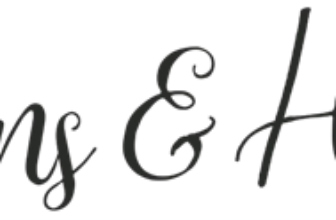
How to Assemble Log Furniture
[ad_1]
Many customers or potential customers are fearful of how much work it will be to assemble their log furniture once it is purchased. Hopefully this article will help to clear up some of the questions that naturally arise.
While assembly instructions vary between log furniture manufacturers, there are many similarities as well. Following is an overview that should give you a better idea what is involved:
Dressers, Chests, Night Stands and Armoires
Most rustic cased goods, such as dressers, chests, night stands and armoires require very little assembly at all. As a general rule we take off doors and drawer handles to avoid damage during shipping, as they tend to protrude and be at risk.
There are holes in the drawer fronts or doors, and screws are included, so for these items it is simply a matter of placing the wood furniture handle over the holes, inserting the screws through the door or drawer into the hole, and tightening things up.
Amish Low Post Log Beds
Most of the Amish manufacturers like to assemble the headboards on the log beds themselves. Sometimes we ask them to leave the four corner legs off for ease in shipping, as the beds can be somewhat massive and making them smaller helps save on shipping cost.
All of the Amish furniture makers I know use Gorilla Glue, which is an incredibly strong glue. Once they glue the headboard, you might as well forget trying to take it apart. I know people who have tried to take them apart, and broken a piece of the bed instead.
So as a general rule, Amish headboards and footboards come completely assembled. At the very minimum, the ladder portion that goes across between the two posts is already assembled and glued. If the posts are not attached, you have to plug the two horizontal ladder portions of the bed (headboard and footboard) into the four corner posts.
Amish beds are generally 100% wood.
That means the mattress and box springs are supported by a wood frame. As a general rule, two logs run down the side of each bed, at the base of the box springs. These logs are plugged into the headboard and footboard at each end. The bottom of these two logs has holes drilled for three “cross logs” which go across and support the bed. The middle cross log, on most Amish beds, has a little log piece which goes down to the floor to offer a higher degree of support.
So there you have it. If you’ve never seen an Amish bed frame before, you might have to look at those logs for a minute to figure it out. But once you understand, it’s really pretty straightforward. You will want a screwdriver, as you will want to drive some 2 ½ inch wood screws near where the log ends, or “chucks” as they are called, plug into their appointed holes.
This secures the entire frame, and, together with the heavy dollop of Guerilla glue already administered by the Amish, makes it even stronger. A rubber mallet also comes in pretty handy at times, to tap an ornery piece of wood into place. But you can use a regular hammer, if you protect the wood by putting a book or something in between.
Low Post Log Beds with Metal Frames
Assembly of low post log beds with metal frames is even easier. Generally the ladder portions come pre-assembled, so all you have to do is plug the “chucks” into the four corner posts and drive in the wood screws provided to secure them. Most or our beds with metal frames have pre-installed lag bolts on the headboard and footboard logs. You simply take the metal frame and hook it over the lag bolts on each, then fasten the nuts to secure the bed.
Log beds with metal frames are very sturdy and probably a bit easier to assemble then the 100% log beds. They also take a little less room sideways, as they don’t have the log side rails on the side. You can get decorative log side rails to fasten over the metal bed frame, if having a bed frame showing bothers you. You can also cover up the metal bed frame with a skirt, and it will not show when the bed is made anyway.
Assembly of Canopy Log Beds
Assembling a canopy log bed is a bit more challenging than the others, simply because of the height and size of the logs. This is definitely a two person job – I know some pretty mechanically minded men who tried to do one by themselves and really had quite a time. It doesn’t matter how handy you are, you need someone to hold one post while you are working on another! Other than that it really isn’t too hard.
There are simply logs to plug into the top part as well as the bottom, and actually, it wouldn’t hurt to have a couple of people to help hold the parts as you fasten the screws.
If I Can Do It…
I am not known for being mechanical or handy, but I put together a low post log bed with a metal frame in less than ½ hour with the help of my 11-year-old son. So if you are mechanically challenged, it really is not so bad.
But if a log bed is what you have always hoped for but you really are overwhelmed by the thought of putting it together, why not make some chocolate chip cookies for one of your screwdriver-wielding friends and let them give you a hand. In my humble opinion, however, putting a log bed together is not nearly as hard as some other assembly projects I have tackled. So get out your screwdriver and have at it!
[ad_2]
Source by C. J. Haus



